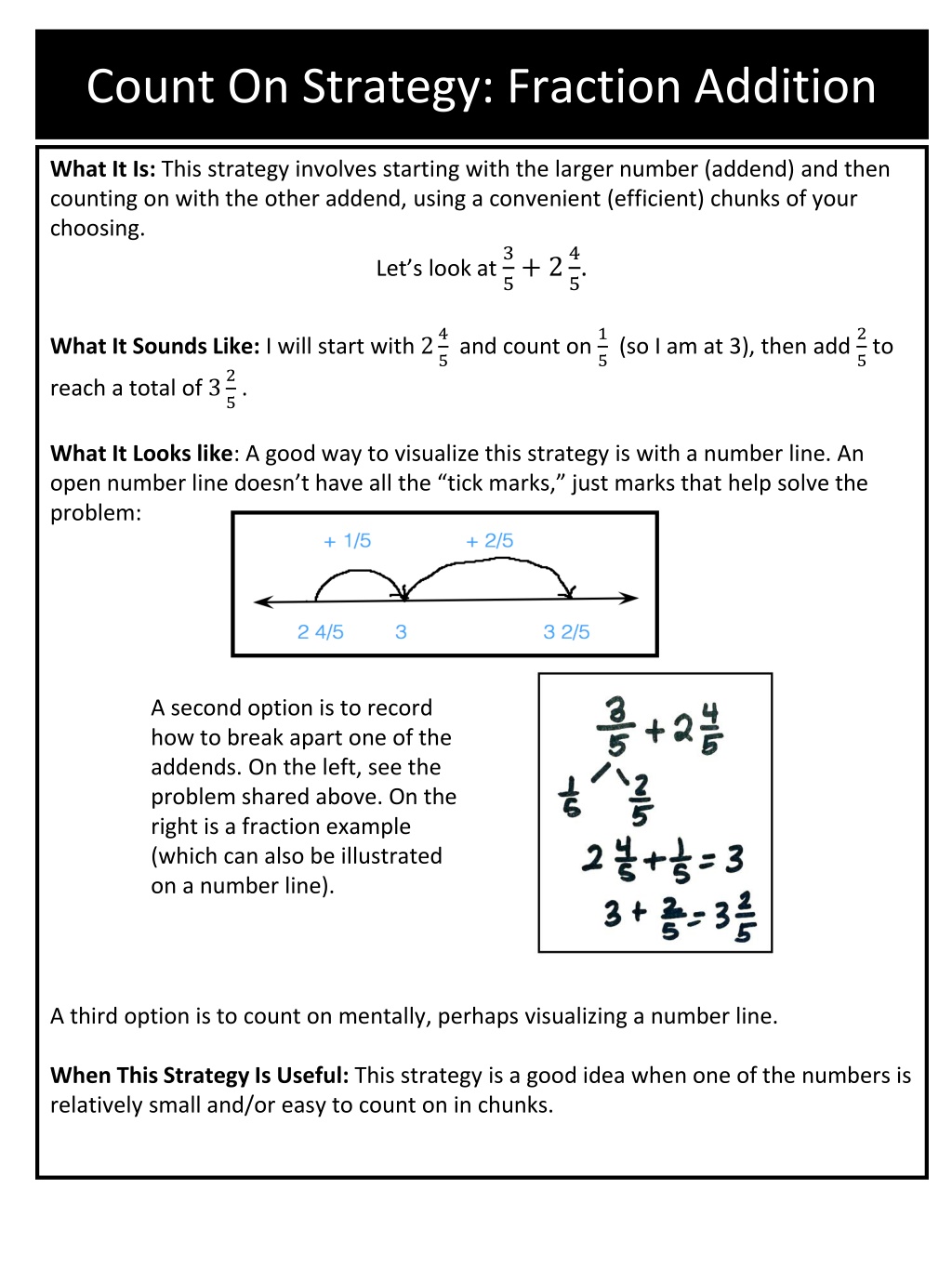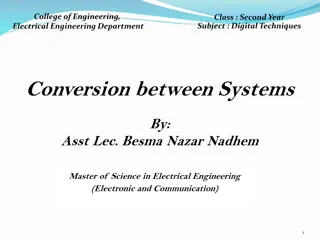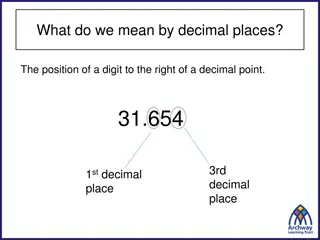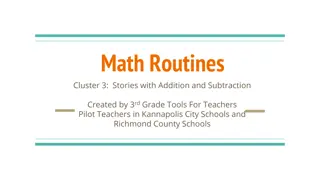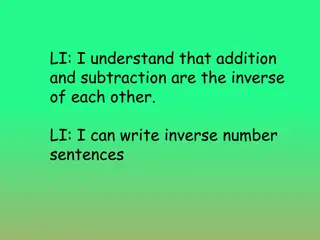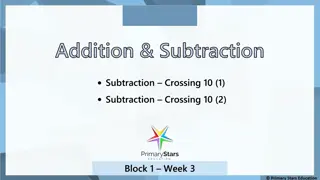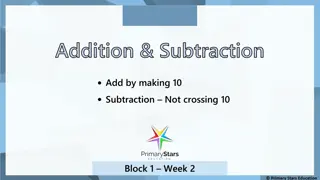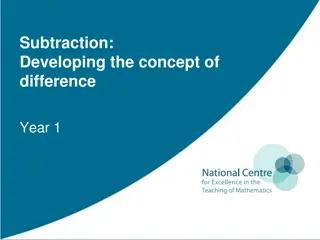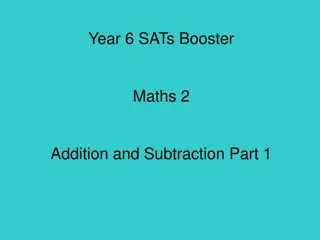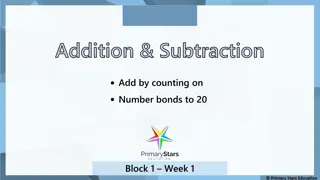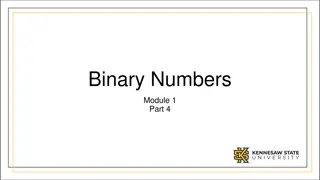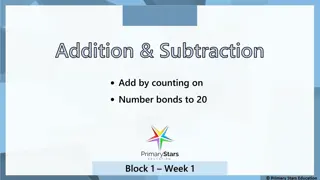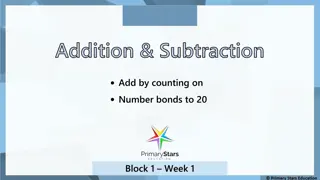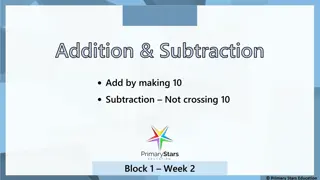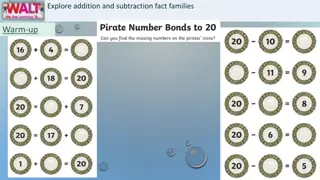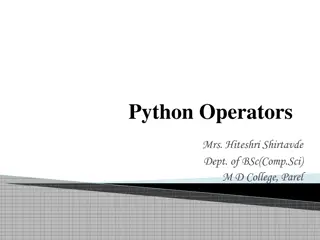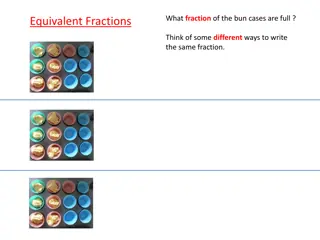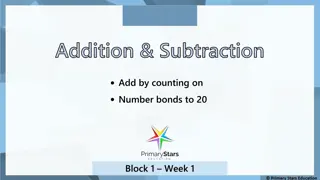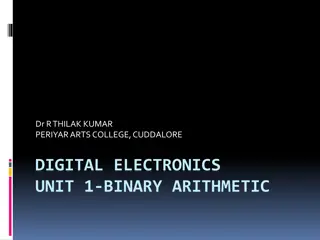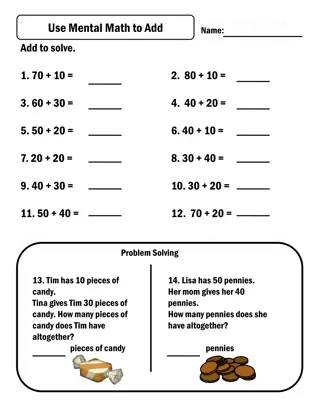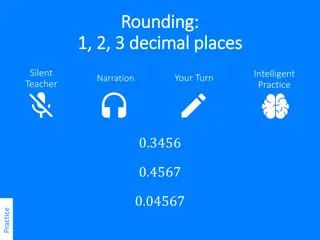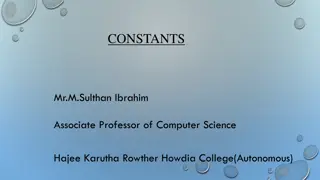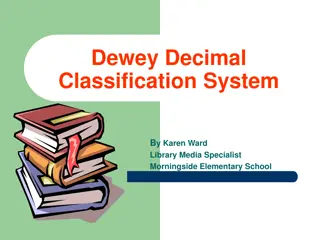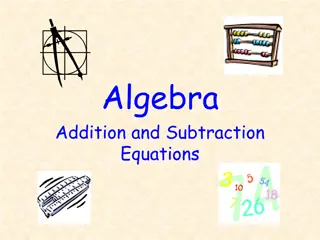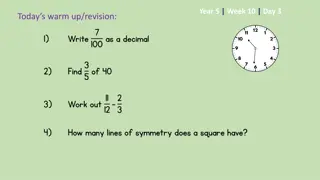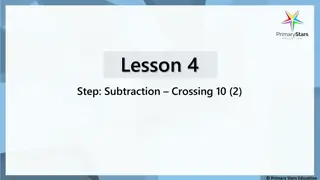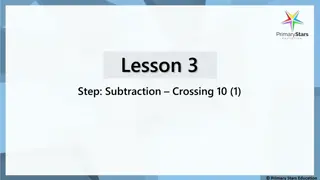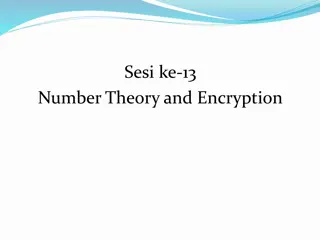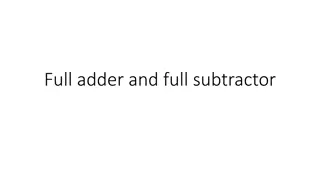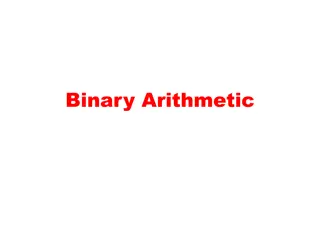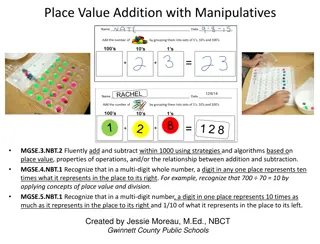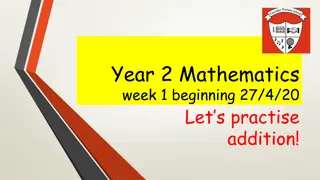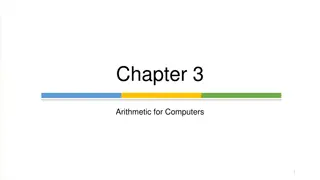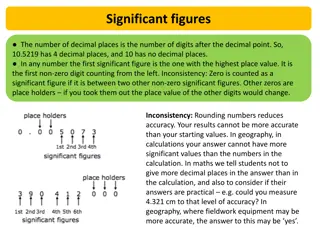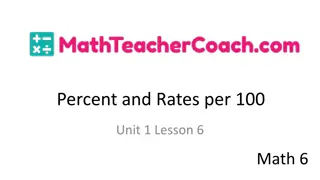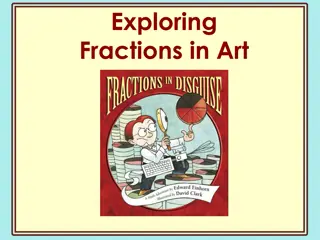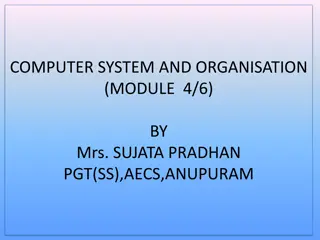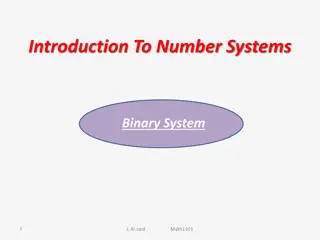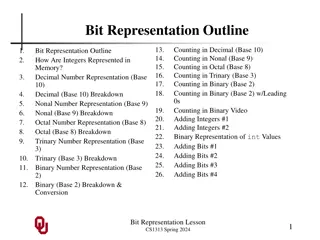Efficient Strategies for Fraction and Decimal Addition and Subtraction
Utilize the Count On and Count Back strategies to simplify fraction and decimal addition and subtraction. Start with the larger number and count on with the other addend or break apart the subtrahend into manageable chunks. These visual and mental approaches enhance calculation efficiency and accuracy.
Download Presentation

Please find below an Image/Link to download the presentation.
The content on the website is provided AS IS for your information and personal use only. It may not be sold, licensed, or shared on other websites without obtaining consent from the author. Download presentation by click this link. If you encounter any issues during the download, it is possible that the publisher has removed the file from their server.
E N D
Presentation Transcript
Count On Strategy: Fraction Addition What It Is: This strategy involves starting with the larger number (addend) and then counting on with the other addend, using a convenient (efficient) chunks of your choosing. Let s look at 3 5+ 24 5. What It Sounds Like: I will start with 24 reach a total of 32 5. 5and count on 1 5(so I am at 3), then add 2 5to What It Looks like: A good way to visualize this strategy is with a number line. An open number line doesn t have all the tick marks, just marks that help solve the problem: A second option is to record how to break apart one of the addends. On the left, see the problem shared above. On the right is a fraction example (which can also be illustrated on a number line). A third option is to count on mentally, perhaps visualizing a number line. When This Strategy Is Useful: This strategy is a good idea when one of the numbers is relatively small and/or easy to count on in chunks.
Count Back Strategy: Fraction Subtraction What It Is: This strategy involves breaking apart the second number (subtrahend) into convenient (efficient) chunks and taking away each of those chunks. Let s look at 61 4 13 4. What It Sounds Like: I will start with 61 subtract 1 subtract 11 4and count back 1 (so I am at 51 4to reach 42 2, and the answer is 41 4), then 4and 2. 4to reach 5, and finally 2 4. That is 5. Take away the remaining 1 4or 41 2OR I will start at 61 What It Looks Like: A good way to visualize this strategy is with a number line. An open number line doesn t have all the tick marks, just marks that help solve the problem: A second option is to record how to break apart one of the addends. On the left, see the problem shared above. A third option is to count back mentally, perhaps visualizing a number line. When This Strategy Is Useful: This strategy is a good idea when one of the numbers is relatively small and/or easy to take away in chunks.
Count On Strategy: Decimal Addition What It Is: This strategy involves starting with the larger number (addend), and then counting on with the other addend, using a convenient (efficient) chunks of your choosing. Let s look at 15.8 + 2.3. What It Sounds Like: I will start with 15.8, then add 2 (so I am at 17.8), then add two- tenths to 18 and add the remaining one-tenth to reach a total of 18.1. What It Looks Like: A good way to visualize this strategy is with a number line. An open number line doesn t have all the tick marks, just marks that help solve the problem: A second option is to record how to break apart one of the addends. On the left, see the problem shared above. On the right is a fraction example (which can also be illustrated on a number line). A third option is to count on mentally, perhaps visualizing a number line. When This Strategy Is Useful: This strategy is a good idea when one of the numbers is relatively small and/or easy to count on in chunks.
Count Back Strategy: Decimal Subtraction What It Is: This strategy involves breaking apart the second number (subtrahend) into convenient (efficient) chunks and taking away each of those chunks. Let s look at 8.3 1.7. What It Sounds Like: I will count back 1 (so I am at 7.3), then subtract three-tenths to reach 7, and finally subtract four tenths to equal 6.6 OR I will subtract 1.3. That gives me 7. Then I take away the remaining four-tenths, and the answer is 6.6. What It Looks Like: A good way to visualize this strategy is with a number line. An open number line doesn t have all the tick marks, just marks that help solve the problem: A second option is to record how to break apart one of the addends. On the left, see the problem shared above. A third option is to count back mentally, perhaps visualizing a number line. When Is This Strategy Useful: This strategy is a good idea when one of the numbers is relatively small and/or easy to take away in chunks.
